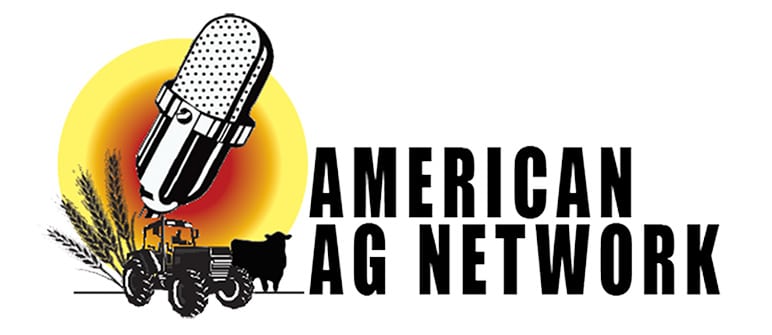Washington, D.C. Nov. 20, 2023. Recently released proposals from the Environmental Protection Agency regarding its Endangered Species Act commitments under the pesticide program are causing great concern among soybean farmers. To provide scope for the potential detriment to soy, just one of the proposals alone could significantly hinder or eliminate pesticide use on close to 13 million acres of cropland, including more than 5 million acres of soybeans.
“Soy growers are fully supportive of EPA taking care to assure the pesticide registration process, including usage parameters, will not harm our wildlife or the environment, but the broad approach EPA is suggesting in the Vulnerable Species Pilot Project would negatively impact millions and millions of acres of valuable farmland. What’s more, we know the agency intends to expand the pilot project to include much larger areas in the future,” Alan Meadows, soybean farmer from Halls, Tennessee, and American Soybean Association board member commented.
EPA is caught in a continuous struggle to complete endangered species impact evaluations for the laundry list of pesticides it is required to review. It has lost multiple lawsuits as a result, sometimes leading to the untenable outcome of the agency immediately pulling a pesticide from the market. ESA consultations typically take four to 15 years, and EPA has court-determined deadlines to complete 18 reviews in the next six years. To alleviate the subsequent unending backlog of reviews, EPA has proposed several ESA pilot projects and strategies, including the VSPP, aimed at streamlining the system.
Under the VSPP proposal, growers would be required to make unwieldy efforts intended to protect specific endangered species in predetermined areas to achieve ESA compliance without waiting indefinitely for individual species evaluations. The agency proposed these VSPP areas based on 27 endangered species ranges, all found in the continental United States. EPA says it has suggested small ranges, but additional species with larger ranges will likely be added in a future pilot expansion.
To Beetle or Not to Beetle? That is the question. Soybean growers are not flip when it comes to protecting species, but taking into account just one of the 27 vulnerable species involved, it is easy to see the impact of the VSPP proposal. The American burying beetle alone brings restrictions on the most acres at over 43 million. The total acreage impact for all 27 species is more than 97 million acres.
EPA’s proposal creates two specific “areas:” 1. Over 20 million acres designated “avoidance areas,” or highly restrictive zones with zero pesticide applications without Fish and Wildlife Service consent months in advance, or 2. “mitigation areas,” which do not have outright pesticide bans without prior consent but do have a list of hurdles farmers must navigate to continue using pesticides. Take for example spray drift minimization: The exact requirements vary by species and application method but generally involve spray buffers. The second mitigation is runoff/erosion minimization, which has a litany of requirements and applies to all species areas except White Bluff’s bladderpod and, again, the American burying beetle, which we point out as an example of how species-specific these requirements can be. For six species, avoidance and mitigation areas are explicitly determined by location. For the other 21, the avoidance and mitigation areas would be separated by whether the land in the area contains habitat that fits the provided description. For instance, the habitat for the Ozark cavefish is karst groundwater defined as, “features of karst groundwater systems of the Springfield Plateau aquifer that exists within a few hundred feet of the surface such as underground streams, pools, etc.” Pesticide users are responsible for determining if the habitat meets this tricky criterion.
To add another layer of complexity atop the species and region (area) complexities, runoff mitigation options vary by crop type. For instance, rice has only four options. Given that four mitigations must be implemented for many of these areas, rice producers have no discretion in selecting the qualifying practices. Field crops have 13 options, four of which they must utilize. Some are beyond farmer control, such as the slope of the field. Many of the mitigations have a high cost of implementation. For example, planting buffers (i.e., trees) could cost $330 per acre annually and filter strips like grasses or other natural vegetation could cost $233 per acre annually. There are also equipment costs to be considered.
The layers of burden would also affect organic production. Many pesticides permitted for USDA-certified organic agriculture would fall under the program. Further, conservation practices often rely on herbicides. For instance, no-till practices require herbicides that can be applied over the top of the crop to control weeds, and cover crops are often terminated with herbicides. Farms that use these conservation practices in VSPP areas will find it costly to implement or continue them.
The financial impact for landowners and farmers in the program would likely be severe. For avoidance areas, it is quite possible agriculture could not persist under the proposal, a conclusion also reached by USDA. Even in the mitigation areas, the ability of agriculture to survive is questionable. According to ASA analysis, scenarios demonstrate land would have almost no agricultural return.
Adding up the blanket protections suggested for everything from burying beetles to fairy shrimp, milkweed to prairie chickens in areas that affect the majority of the United States, the bottom line is this: EPA’s proposed broad approach to ESA compliance will likely result in hundreds of thousands to millions of acres of farmland being removed from production due to an outright inability to use pesticides or the cost of mitigations exceeding the agricultural productivity of the land. Most concerning is that EPA intends to expand the program beyond the 27 initial species labeled as having “small” ranges.
The VSPP has not been finalized: Per the terms of a recently announced court settlement, EPA has until Dec. 30 to determine if modifications should be made to VSPP and until Sept. 30, 2024, to determine if the proposal should be expanded.
USDA has suggested measures that can be taken to protect valued endangered species while increasing the ability of farmers to comply. These include tailoring the restrictions to the risks of individual pesticides, providing for offsets to allow agricultural production where it is most valuable and accounting for a better understanding of species’ ranges. ASA asks that EPA consider these suggestions and what will protect our species and environment effectively but not sacrifice the livelihoods of America’s farmers and the products they produce.
This news release is based on the analysis of ASA Chief Economist Scott Gerlt and efforts of Government Affairs Director Kyle Kunkler. Read Dr. Gerlt’s full analysis here, and contact ASA communications for interviews with Gerlt, Kunkler or Meadows.


